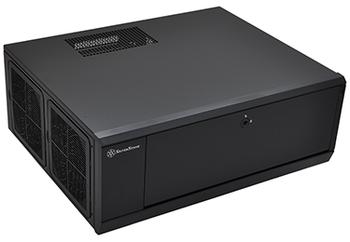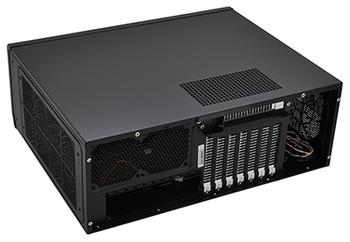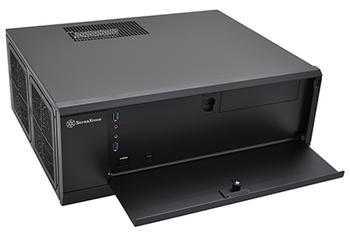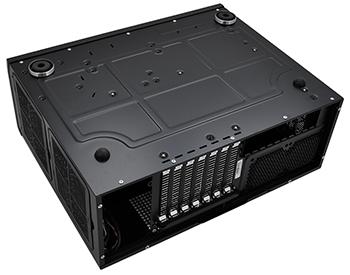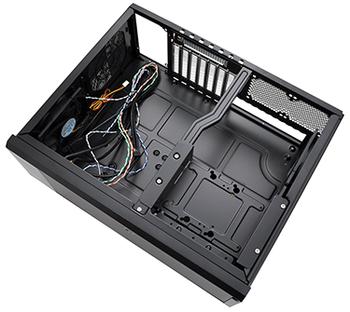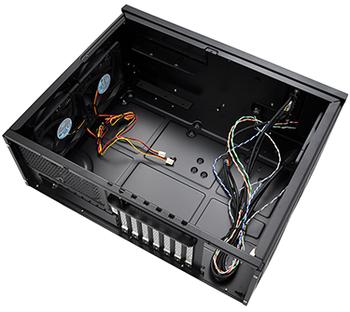SilverStone's latest HTPC solution
When you're contemplating putting an HTPC together, SilverStone tends to be a chassis manufacturers who comes to mind first. The firm has a proven track record in this field, and going by past examples, SilverStone's living-room-friendly designs feature build quality and style that's usually a cut above other mainstream providers.
For those reasons, we've patiently awaited two of the company's latest efforts, the Grandia GD09 and GD10. Priced at £50 and £70, respectively, the duo claim to be "a culmination of SilverStone's decade-long experience in HTPC case design and manufacturing."
In keeping with earlier models in the Grandia range, the goal here isn't necessarily to cut-down in size - there are plenty of turnkey systems that offer pint-sized computing - but rather to give self-builders "maximum flexibility," a "positive air pressure design" and enough room for the "gaming-centric" hardware that most enthusiasts already have.
Thinking of taking some of your existing hardware and putting it on an AV rack alongside the big-screen TV as a hybrid HTPC/gaming rig? Then SilverStone reckons this is the chassis to make it happen. The pricier GD10 is the model under the microscope today, but there isn't a great deal of difference between the two: the GD09 misses out on the aluminium front cover and sees fan count reduced from three to one, but considering the £20 saving, it may be the better bet for most users.
The GD10, on the other hand, should be the sleeker option, though not everyone will see it that way. Measuring 442mm (W) x 171mm (H) x 362mm (D) in size, the GD10 is still a chunky unit and will need a well-spaced AV rack: it doesn't actually fit on either of the two shelves on my own TV stand. And the key selling point - an aluminium front door - could be a highlight or a nuisance, depending on how you see it.
We like the idea of clutter being hidden from view, but keeping the power button behind a locked door may seem counterintuitive to some. SilverStone states that the "lockable front door ensures security of system and drives," but that might be a bit of a stretch - the lock is so basic that it can be turned using just your finger. With the door closed, the only visual aids are a pair of blue LEDs - they're positioned in the bottom-left corner to provide power and drive-activity status.
The magnet does a decent job of holding the door in place, though those who want quicker access to their USB ports and optical drive will lean towards the simpler GD09. We've yet to see the more-affordable model in the flesh, but our hands-on experience of the GD10 has left us feeling as though overall quality isn't up to SilverStone's usual high standards. The black paintwork is applied throughout, which is always nice to see, but if you look close enough there are visible speckles in the finish.
These niggles are hardly going to be noticed when the system is in situ, mind you, and would-be buyers are more likely to be attracted by the roomy interior, which SilverStone reckons makes the GD10 "the perfect HTPC case for everyone."
Bold claims, but we can see where SilverStone is coming from. If you already have, say, an ATX motherboard and a powerful graphics card, both could easily be housed in the GD10 for transformation into a gaming rig of living-room-friendly proportions.
Access to the internal space is gained by removing the top panel. This involves undoing two small screws around back, and bear in mind there are no thumb screws throughout the GD10, so you will need a screwdriver at all times. With the lid off, we can see that the chassis won't have much trouble accommodating existing hardware.



